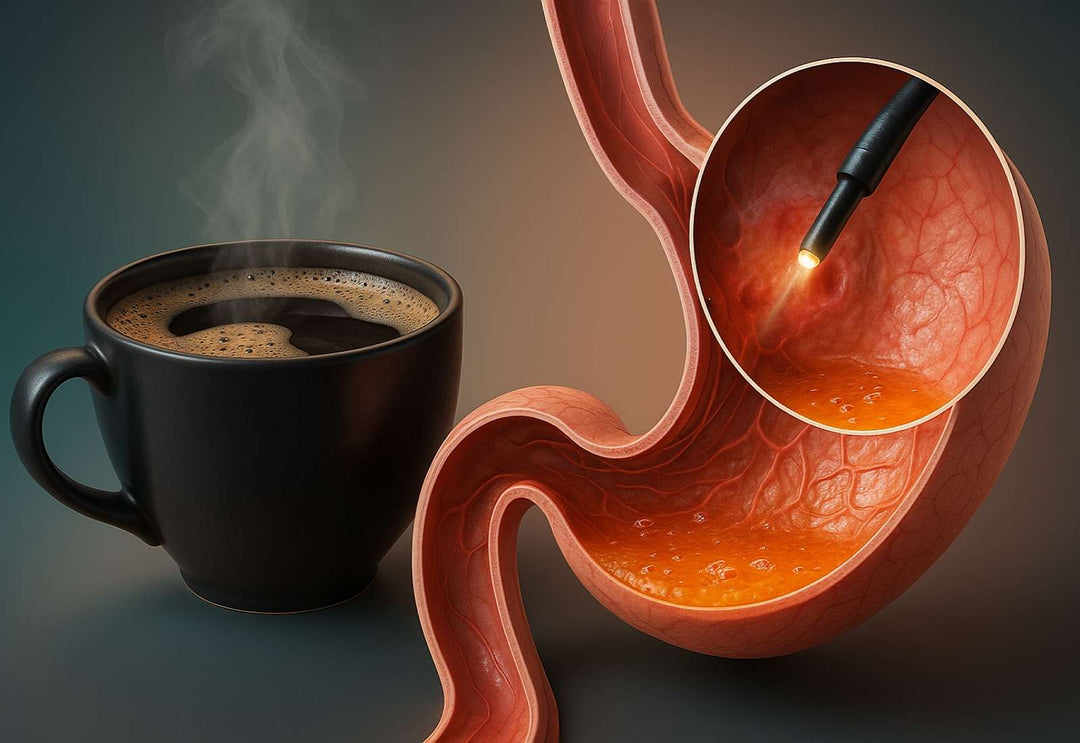Does Coffee Grind Size Matter?
Introduction

In the never-ending quest for the perfect cup of coffee, we've all heard about the importance of coffee beans, water quality, and brewing methods. But have you ever stopped to consider the science behind the grind? Believe it or not, the size of your coffee particles plays a crucial role in the taste of your morning brew.
Coffee particle size affects the extraction process and ultimately determines the flavor profile of your coffee. Finer particles increase surface area contact with hot water, resulting in a stronger, more intense flavor. Conversely, coarser particles yield a milder and smoother taste.
Understanding the impact of coffee particle size on taste can help you achieve that ideal cup of joe. Whether you prefer a bold, robust brew or a delicate, nuanced flavor, finetuning your grind size could make all the difference. So next time you're tinkering with your coffee grinder, remember that the science behind the grind is key to unlocking that perfect cup of coffee.
So, grab your favorite mug, indulge in the aroma, and let's dive into the intriguing science behind coffee particle size and its impact on taste.
The Importance of Grind Size in Coffee Brewing

When it comes to making coffee, the grind size is often an overlooked factor. Many coffee enthusiasts focus on the origin and quality of the beans, the brewing method, and the water-to-coffee ratio, but forget that the grind size is equally important. The grind size directly affects the extraction process, which is the process of dissolving the coffee's soluble compounds into the water. Different grind sizes result in different extraction rates, altering the flavor profile of the coffee.
How Coffee Particle Size Affects Extraction
To understand how coffee particle size affects extraction, it's important to know the basics of brewing. When hot water comes into contact with coffee grounds, it extracts the compounds that give coffee its characteristic flavor and aroma. The extraction process is influenced by various factors, including temperature, time, and surface area. The size of the coffee particles determines the surface area available for the water to interact with, thereby affecting the extraction rate.
Finer particles have a larger surface area compared to coarser particles. This means that when hot water is poured over finely ground coffee, more surface area is exposed to the water, resulting in a faster and more intense extraction. On the other hand, coarser particles have less surface area, leading to a slower and milder extraction. The extraction rate directly impacts the strength and flavor profile of the coffee.
The Impact of Grind Size on Flavor Profile
The flavor profile of coffee is a complex combination of acidity, bitterness, sweetness, and aroma. The grind size influences these characteristics by determining the extraction rate and the balance between different flavors. Finer grinds tend to result in a stronger, more intense cup of coffee with higher acidity and bitterness. Coarser grinds, on the other hand, produce a milder and smoother cup with less acidity and bitterness.
The extraction rate also affects the balance between sweetness and bitterness. Over-extraction, which occurs when the coffee is ground too fine and the water spends too much time in contact with the grounds, can lead to a bitter taste. Under-extraction, which happens with coarser grinds and insufficient contact time, can result in a sour or weak cup of coffee. Finding the right grind size is crucial for achieving the perfect balance of flavors.
Different Grind Sizes for Various Brewing Methods
Different brewing methods require different grind sizes to achieve optimal results. Each brewing method has its own characteristics and unique requirements, and the grind size plays a significant role in extracting the desired flavors.
For example, espresso requires a very fine grind size to ensure a high extraction rate in a short amount of time. This fine grind size allows the water to pass through the coffee quickly, resulting in a concentrated and intense shot of espresso. On the other hand, a French press requires a coarse grind size to prevent the fine particles from passing through the metal mesh filter. This coarse grind size allows for a slower extraction and produces a rich, full-bodied cup of coffee.
| Grind Size | Brewing Method |
|---|---|
| Extra Coarse | Cold Brew |
| Coarse | French Press, Percolator |
| Medium-Coarse | Chemex, Clever Dripper |
| Medium | Flat Bottom Drip Machines, Aeropress (with a 3+ minute brew time) |
| Medium-Fine | Cone Shaped Pour Over Brewers, Aeropress (with a 2-3 minute brew time) |
| Fine | Espresso, Moka Pot, Aeropress (with a 1-2 minute brew time) |
| Extra Fine | Turkish Coffee |
The role of consistency in grind size
Consistency in grind size is just as important as selecting the right size for your brewing method. Inconsistent grind sizes can lead to an uneven extraction, resulting in a brew with varying flavors and strengths. When some particles are too fine and others too coarse, the water will extract different compounds at different rates, resulting in an imbalanced cup of coffee.
To achieve consistency, investing in a good quality burr grinder is highly recommended. Burr grinders crush the coffee beans between two rotating burrs, resulting in a uniform grind size. Blade grinders, on the other hand, chop the beans into uneven pieces, leading to inconsistency. Consistency in grind size is essential for achieving a predictable and well-balanced cup of coffee.
Tools and Techniques for Achieving the Perfect Grind Size
Now that we understand the importance of grind size and consistency, let's explore some tools and techniques to help you achieve the perfect grind size for your desired brew.
One of the most popular tools for grinding coffee is a burr grinder. Burr grinders come in both manual and electric versions, and they offer precise control over the grind size. Manual burr grinders are portable and affordable, making them a popular choice among coffee enthusiasts. Electric burr grinders, on the other hand, are more convenient and allow for easier adjustment of the grind size.
Another tool that can be used is a coffee grinder with adjustable settings. These grinders allow you to select the grind size by adjusting the distance between the burrs or blades. This flexibility is especially useful if you brew coffee using different methods and require varying grind sizes.
Common Mistakes to Avoid When Grinding Coffee
While grinding coffee may seem straightforward, there are a few common mistakes that can negatively impact the quality of your brew. Avoiding these mistakes can help you achieve better results and a more enjoyable cup of coffee.
One common mistake is grinding coffee too far in advance. Coffee grounds start to lose their flavor and aroma as soon as they are exposed to air. To preserve the freshness, it is best to grind the coffee just before brewing (within 5 minutes). Another mistake, as previously mentioned, is to avoid is using the wrong grind size for your brewing method. As discussed, a grind size that is too fine or too coarse can result in an unbalanced and unpleasant cup of coffee and that is never good if you're craving a truly delectable cup of specialty grade gold.
| Time Exposed to Air | Flavor & Aroma Impact |
|---|---|
| 5 Minutes | Minimal Loss |
| 30 Minutes | Noticeable Loss |
| 1 Hour | Significant Loss |
| 3+ Hours | Stale & Flat |
Experimenting With Grind Size to Personalize Your Brew
Finding the perfect grind size for your taste preferences may require some experimentation. Everyone's taste buds are unique, and what works for one person may not work for another. Start by following the grind size recommendations for your brewing method, and then adjust according to your personal taste.
If you prefer a stronger and more intense cup of coffee, try using a finer grind size and adjusting the extraction time. For a milder and smoother cup, experiment with a coarser grind size. Keep a record of your experiments, noting the grind size, brewing method, extraction time, and taste. This will help you refine your brewing process and achieve consistent results.
Conclusion: Enhancing Your Coffee Experience Through Understanding Grind Size
In conclusion, the grind size of your coffee particles is a critical factor in achieving the perfect cup of coffee. It affects the extraction process and determines the flavor profile of your brew. Whether you prefer a bold and robust cup or a delicate and nuanced flavor, understanding the science behind coffee particle size can help you fine-tune your grind and enhance your coffee experience.
Next time you're brewing your favorite cup of joe, take a moment to consider the grind size and its impact on taste. Experiment with different grind sizes, brewing methods, and extraction times to find your perfect combination. By mastering the art of grinding coffee, you'll be one step closer to enjoying the ultimate coffee experience.
Try General Warfield's Specialty Beans Today!
Grind and brew our gourmet roasts for the best cup of joe you've ever tasted. Click image below and explore!




Leave a comment